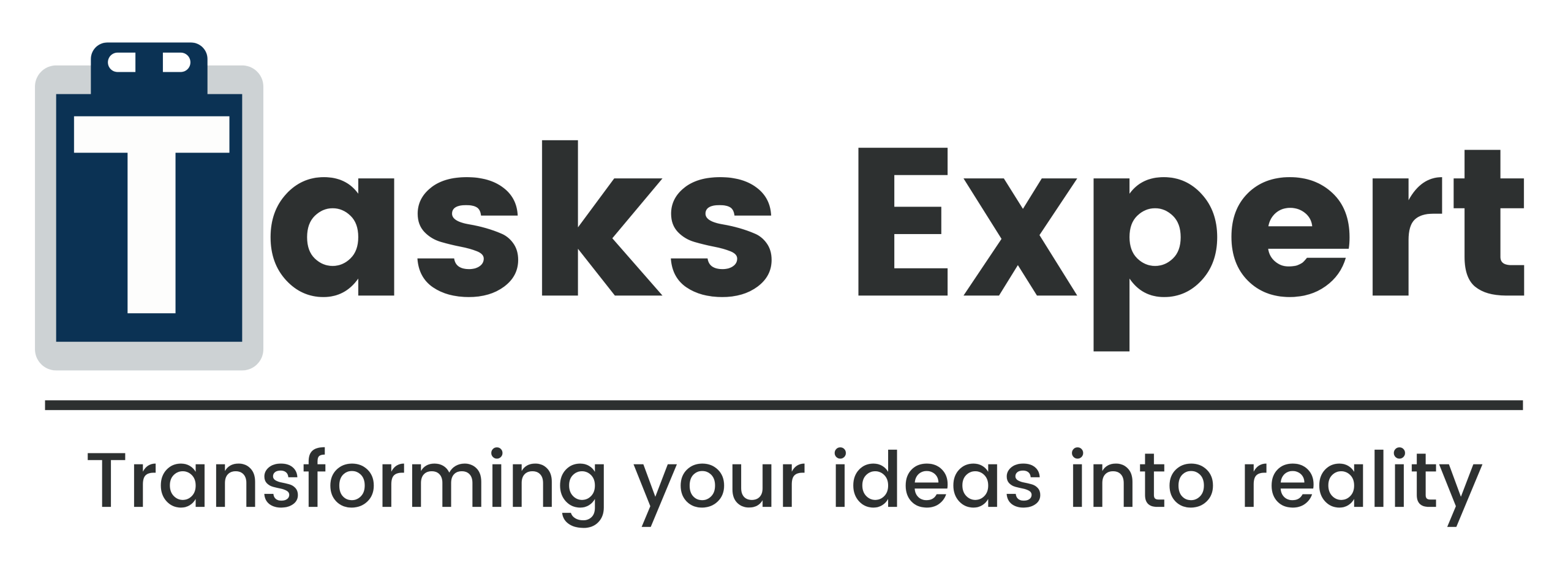Introduction
As companies mature, they tend to increase their reliance on third-party suppliers to provide a range of tech-related services, including cloud platforms, data protection, software development, and infrastructure management. These suppliers also bring flexibility and innovation to an organization. But without a clear and formal approach to oversight, the expanding vendor ecosystem can easily become an area of wasteful spending and potential incompetence. Costs can skyrocket, service quality can suffer, and compliance problems can emerge with little or no warning.
That’s why it is so important to have a defined IT vendor management process. This structure enables the organization to take a centralized approach to onboarding, monitoring, and assessing all vendors based on business objectives, performance metrics, and regulatory requirements. This structure enables companies to maximize value from vendor relationships with minimal operational and reputational exposure. With a well-structured framework, IT vendor management is no longer a back-office operation, but rather a strategic tool to drive sustained performance, scale, and resiliency.
What Is IT Vendor Management?

IT vendor management is the practice of managing relationships with third-party vendors that your business uses for its IT needs. It is about choosing the right vendors, managing performance to meet business objectives, managing risk, and creating long-term value. It’s much more than sourcing; it’s a governance-based model that seeks to optimize ROI while minimizing risk.
IT vendor management is the stack of processes, individuals, and technology for ensuring vendors who provide technology products or services are evaluated, onboarded, monitored, and managed. This includes software vendors, cloud solution providers, data centers, cybersecurity consultants, infrastructure providers, and the rest of the industry.
A complete IT vendor management plan would typically have the following:

- Vendor evaluation and selection: Identifying what factors should be used to rate potential vendors on technical capability, cost, service standards, security posture, and culture alignment.
- Contract negotiation and SLA enforcement: Defining SLAs that specify the level of service and appropriate remedies and penalties for shortfalls.
- Performance measurement and KPIs: Real-time measure of service delivery against clear standards, including uptime, response time, fix rate, and customer satisfaction scores.
- IT Vendor Risk Management: Assess and mitigate risks in categories like data security, service continuity, financial stability, and regulatory adherence. This calls for regular audits, risk scoring, and planning for contingencies.
- Strategic fit and relationship governance: Managing service provider partnerships as an extended enterprise. It involves regular business reviews, feedback loops, and joint innovation or efficiency gains.
Good IT vendor management also evolves with business priorities. With the accelerating pace of digital from here on, the vendor landscape will get complicated. New vendors are entering the market at an increasingly rapid pace, and old contracts need review. As a result, organizations must iteratively hone their strategies and their toolkit for vendor lifecycle management.
Through your vendor management model, you need to incorporate vendor management systems or IT vendor management services that can help you streamline workflows, consolidate documentation, and create actionable intelligence. This will enable your internal team to practice proactive problem-solving to maintain professionalism.
Whether you oversee five suppliers or 500, the base objective is always the same: deliver value, attain reliability, and manage risk. A robust IT vendor management infrastructure does more than protect operations — it also underpins agility, scalability, and digital resilience.
Also Read: Virtual Assistant Services in Funchal
IT Vendor Management: Best Practices
To achieve the greatest benefit of third-party vendors and enhance your overall governance, it is critical to utilize the following IT vendor management best practices. These strategies minimize vendor-related risk, improve performance, and help ensure that your investments are aligned with business objectives.

1. Vendors segmented by risk and value:
All vendors aren’t created equal in terms of weight and risk. Strategic, high-value suppliers, such as cybersecurity companies or cloud providers, would benefit from heightened monitoring, including more regular reviews and bespoke SLAs, and more robust performance monitoring. Low-impact vendors can implement a milder process. This partitioning leads to economical use of resources and less exposure to risks.
2. Set clear SLAs and performance expectations:
Clearly defined service delivery standards create accurate expectations from the start. Quantify KPIs, such as uptime guarantees, response times, and customer satisfaction scores. Monitor these benchmarks periodically and include contingency plans in the event vendors do not perform.
3. Encourage partnership, not just transactions:
The best IT vendor management program treats vendors as partners, not just vendors that provide services. Include strategic vendors in planning sessions and product development, and innovation discussions. This creates loyalty, speeds up fixes, and often results in better contract terms eventually, or a faster resolution to problems.
4. Automate contract and performance monitoring:
Manual monitoring often leads to errors and inefficiencies; automation enhances accuracy and speed. Stay on top of deadlines, automate SLA tracking and contract renewals with document management tools by using an IT vendor management platform. Such solutions provide transparency, reduce administrative overhead, and enable on-the-fly visibility into vendor performance.
5. Perform regular risk assessments:
With all the cyber-threats today, IT vendor risk management has never been more significant. Assess levels of data access, adherence to regulations such as GDPR, and vendors’ disaster-recovery abilities. Rate risks and track them over time to anticipate weaknesses. This is of particular importance for vendors that have access to customer data or important infrastructure.
6. Establish feedback and improvement loops:
Make it a part of your process to conduct regular vendor reviews. Leverage structured surveys tailored to your processes, performance dashboards, and input from your team to understand what’s working — and what’s not. They can be used to guide renegotiations, renewals, or decisions to offboard a vendor.
As your organization integrates these best practices into your IT vendor management, you will put your company in a position to establish and sustain high service levels, which will enable you to mitigate risk and cultivate vendor relationships that are directly linked to business success. “It’s a strategic way of managing external technology partners,” an “antifragile” strategy, Tendrok said, “not just being in a reactive mode when something bad happens.”
Developing a Scalable IT Vendor Management Program
1. Why IT Vendor Management Scalability is of the Essence

Most organizations start down the IT vendor management path in a reactive, piecemeal manner; they use spreadsheets, people in isolation, and ad hoc processes to oversee what is rapidly becoming a web of vendors. Though it may be feasible at a small scale, it is inefficient as a complex vendor ecosystem is added. Organizations need scalable vendor management structures for better visibility and agility. Keep things organized, compliant, and cost-effective as you scale.
2. Developing a Model of Governance

To scale effectively, organizations need a formal governance model that delegates responsibilities across departments. Delegate vendor management responsibility to a multi-disciplinary team that includes IT, procurement, and finance, in addition to general counsel and risk management. Jobs and process steps should be clearly outlined, ensuring contract review, SLA monitoring, and renewals become a standardised routine. This integrated approach also avoids overlaps and duplications.
3. Placing Vendor Documentation under one Umbrella

Central documentation is equally mandatory. Purchase a cloud-based IT vendor management platform that maintains all of your vendor information and groups them by context, i.e., contacts, contracts, prices, risk profiles, compliance files, and KPIs, adding value in the process. This centralized repository is designed to simplify access, ensure audit readiness, and facilitate cross-functional collaboration.
4. Using Dashboards and Reporting

Add dashboards and reporting tools that provide real-time metrics at a glance, like renewal timelines, contract values, SLA fulfillment, and risk. Seek out a solution that will provide real-time data synchronization and ERP integration, and a procurement system.
5. Automation for Efficiency and Accuracy

Scale requires Automation. Today’s AI and automation tools streamline these processes now (from automatic reminders of contract renewals to automated vendor risk-scoring to digital signatures) and lead to better, more error-free decisions. And this technology also supports predictive analytics, enabling organizations to identify underperformance or potential risks in advance, before they become serious.
6. Iterative Development with Feedback Cycles

Finally, make sure the framework is for continuous improvement. Establishing regular reviews of vendors’ performance and performance assessments. Collect comments from internal stakeholders and vendors and find areas of procedural gaps and where improvement could be made. A scalable vendor management model is not static; it is fluid, ebbing and flowing in direct relation to the business’s needs, as well as the regulatory and technological environments you operate within.
When it comes down to it, scalability in vendor management isn’t doing more work, it’s doing better work. With a solid building block for technology outcomes and policy, tools, and culture, businesses can recalibrate an IT vendorscape from administrative overhead to strategic direction setting.
Common IT Vendor Management Problems and How to Solve Them
With the right strategy, that may be true, but companies continually struggle in their efforts to manage IT vendors. It is important to identify and combat these challenges to maintain a good relationship with a vendor.

1. Bad communication:
Miscommunication over deliverables, timelines, or service expectations can sink even promising partnerships.
Solution: Set up a structured comms rhythm with check-ins, shared KPIs, and escalation models.
2. Undefined SLAs:
Ambiguous or old service level agreements may cause disputes and underperformance.
Remedy: establish, publish, and maintain SLAs with specific objectives and penalty clauses.
3. Risks associated with data sharing:
When sensitive data is shared with vendors, the risk of data leaks or abuse can be very high.
Solution: use IT vendor risk management for tight access controls and applying encryption, and conducting security audits.
4. Vendor lock-in:
If you are too dependent on a single source, you may lack flexibility and pay more.
Solution: Have a diverse base of vendors and figure out the way to exit or have a backup for the most critical services.
By proactively recognizing these issues and integrating safeguards into your IT vendor management framework, you can develop a more resilient ecosystem that is entirely performance-driven.
Also Read: Virtual Assistant Services in Lisbon
How to Choose IT Vendor Management?
Specialized IT vendor management services have emerged as a model to manage complex vendor relationships efficiently, providing oversight, strategy, and compliance for businesses relying on robust vendor ecosystems. In doing so, these outsourced providers deliver the tools, skills, and procedures that are necessary for more effective vendor relationship management and free up internal teams to concentrate on more impactful activities.
IT vendor management services come in various shapes, such as software for automating contract tracking and performance metrics, to fully outsourced offerings in which an outside team handles all communications, evaluations, and renewals. The right partner will depend on the size of your organization, volume of vendors, exposure relative to regulatory requirements, and what you can do internally.

When comparing IT vendor management providers, it’s important to consider:
1. Tech stack integration:
You want the vendor or the platform to integrate seamlessly with your ERP, CRM, procurement systems, etc. Real-time visibility: Avoiding manual integration means no manual work and more visibility.
2. Real-time analytics and reporting:
Be sure to select a vendor that provides dashboards and alerts to track SLA compliance, contract expirations, risk indicators, and comments. Receiving timely information helps make decisions more quickly and solve problems more effectively.
3. Scale across departments and geographies:
Your vendor management needs might be simple today, but they’re going to get bigger. Verify that the vendor is capable of facilitating collaboration across departments and can scale the solution globally.
4. Regulatory compliance:
Opt for suppliers who are well-versed in the compliance nuances of your industry. Opt for suppliers with strong regulatory expertise, whether it’s HIPAA, GDPR, or ISO standards.
5. Risk and performance monitoring:
Leading IT vendor management solutions will come with IT vendor risk management capabilities such as vendor risk scoring, audit readiness reports, and data access tracking.
6. Customization and support:
Your workflows are unique, and the service should be flexible to accommodate them. Consider their onboarding assistance, user training, and customer success programs.
7. Experience:
Ask for a list of references, client testimonials, and case studies from clients in the same industry. A service that is experienced with high-value or regulated vendor portfolios is very likely to provide consistent results.
By selecting the appropriate IT vendor management services, they can minimize friction, enhance compliance, and transform vendor oversight into a strategic lever for business growth.
Conclusion
Get IT vendor management right, and it will be more than tactical oversight: It will be a pillar of business resilience and digital transformation. Well-selected suppliers that are closely managed and where risks are regularly evaluated will better enable the organization to respond to changing market demands, scale up the operation, and innovate with confidence.
IT vendor management is a strategic weapon when done right, especially in a market where tech adoption is accelerating and the regulatory environment is moving to unprecedented levels of scrutiny. Armed with the right approach, companies can integrate vendors to strategic goals, measure ROI in a meaningful way, and simplify operational systems.
The risk management part is key, too, particularly for third-party vendors who have access to sensitive data, systems, or customers. An integrated IT vendor risk management approach provides early warning signs that preventive measures are put in place before things get out of hand. What was once optional is now a mandatory requirement. Regular audits, risk-scoring models, and well-thought-out contingency plans are a must, not a maybe.
Whether you develop in-house capabilities or opt for external partners, the investment in a robust IT vendor-managed services strategy will only add value over time. It provides better control, promotes innovation, and most importantly, it makes sure that your vendor ecosystem helps you grow, secures you, and sustains you.
About Us
Tasks Expert offers top-tier virtual assistant services from highly skilled professionals based in India. Our VAs handle a wide range of tasks, from part time personal assistant to specialized services like remote it support services, professional bookkeeping service etc. Furthermore, it helps businesses worldwide streamline operations and boost productivity.
Ready to elevate your business? Book a Call and let Tasks Expert take care of the rest.









